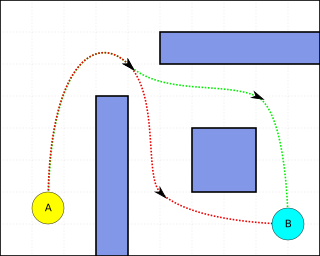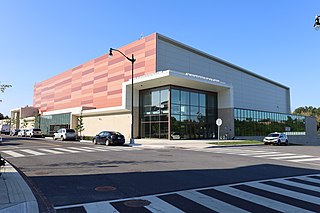In microeconomic theory, the opportunity cost of a choice is the value of the best alternative forgone where, given limited resources, a choice needs to be made between several mutually exclusive alternatives. Assuming the best choice is made, it is the "cost" incurred by not enjoying the benefit that would have been had by taking the second best available choice. The New Oxford American Dictionary defines it as "the loss of potential gain from other alternatives when one alternative is chosen". As a representation of the relationship between scarcity and choice, the objective of opportunity cost is to ensure efficient use of scarce resources. It incorporates all associated costs of a decision, both explicit and implicit. Thus, opportunity costs are not restricted to monetary or financial costs: the real cost of output forgone, lost time, pleasure, or any other benefit that provides utility should also be considered an opportunity cost.

A greedy algorithm is any algorithm that follows the problem-solving heuristic of making the locally optimal choice at each stage. In many problems, a greedy strategy does not produce an optimal solution, but a greedy heuristic can yield locally optimal solutions that approximate a globally optimal solution in a reasonable amount of time.

In economics, profit maximization is the short run or long run process by which a firm may determine the price, input and output levels that will lead to the highest possible total profit. In neoclassical economics, which is currently the mainstream approach to microeconomics, the firm is assumed to be a "rational agent" which wants to maximize its total profit, which is the difference between its total revenue and its total cost.
The Calculus of Consent: Logical Foundations of Constitutional Democracy is a book published by economists James M. Buchanan and Gordon Tullock in 1962. It is considered to be one of the classic works from the discipline of public choice in economics and political science. This work presents the basic principles of public choice theory.

Half-Life: Blue Shift is an expansion pack for the first-person shooter video game Half-Life (1998). It was developed by Gearbox Software and published by Sierra On-Line. Blue Shift was the second expansion for Half-Life, originally intended as part of a Dreamcast port of Half-Life. Although the Dreamcast port was cancelled, the Windows version was released as a standalone product on June 12, 2001 for Windows. It was released on Steam on August 24, 2005.

In the design of experiments, optimal experimental designs are a class of experimental designs that are optimal with respect to some statistical criterion. The creation of this field of statistics has been credited to Danish statistician Kirstine Smith.

A transport network, or transportation network, is a network or graph in geographic space, describing an infrastructure that permits and constrains movement or flow. Examples include but are not limited to road networks, railways, air routes, pipelines, aqueducts, and power lines. The digital representation of these networks, and the methods for their analysis, is a core part of spatial analysis, geographic information systems, public utilities, and transport engineering. Network analysis is an application of the theories and algorithms of graph theory and is a form of proximity analysis.

PC Optimum is a single loyalty program operated by Canadian retail conglomerate Loblaw Companies; it was created through the merger of Loblaws' PC Plus and Shoppers Drug Mart's Shoppers Optimum programs.

Pathfinding or pathing is the plotting, by a computer application, of the shortest route between two points. It is a more practical variant on solving mazes. This field of research is based heavily on Dijkstra's algorithm for finding the shortest path on a weighted graph.
In the card game contract bridge, a suit combination is a specific subset of the cards of one suit held respectively in declarer's and dummy's hands at the onset of play. While the ranks of the remaining cards held by the defenders can be deduced precisely, their location is unknown. Optimum suit combination play allows for all possible lies of the cards held by the defenders.
The study of facility location problems (FLP), also known as location analysis, is a branch of operations research and computational geometry concerned with the optimal placement of facilities to minimize transportation costs while considering factors like avoiding placing hazardous materials near housing, and competitors' facilities. The techniques also apply to cluster analysis.
A princess and monster game is a pursuit–evasion game played by two players in a region.
The Half-Life video game series features many locations set in a dystopian future stemming from the events of the first game, Half-Life. These locations are used and referred to throughout the series. The locations, for the most part, are designed and modeled from real-world equivalent locations in Eastern Europe, but also include science fiction settings including the Black Mesa Research Facility, a labyrinthine subterranean research complex, and Xen, an alien dimension.

Doctor Who and the Warlord is a computer game based on the long-running British science fiction television series Doctor Who, released for the BBC Micro in 1985. It was promoted as part of the BBC Computer Literacy Project, with one such instance being after a 1985 screening of the 1966 film Daleks – Invasion Earth: 2150 A.D..
In game theory, the price of stability (PoS) of a game is the ratio between the best objective function value of one of its equilibria and that of an optimal outcome. The PoS is relevant for games in which there is some objective authority that can influence the players a bit, and maybe help them converge to a good Nash equilibrium. When measuring how efficient a Nash equilibrium is in a specific game we often also talk about the price of anarchy (PoA), which is the ratio between the worst objective function value of one of its equilibria and that of an optimal outcome.
The competitive facility location game is a kind of competitive game in which service-providers select locations to place their facilities in order to maximize their profits. The game has the following components:
Location problem may refer to several categories of problems within various application areas associated with different meanings of the terms "location" and "locate".

The Entertainment and Sports Arena is a multi-purpose events facility, located on the St. Elizabeths East Campus, in Congress Heights, a residential neighborhood in southeast Washington, D.C.

Optimum is an American telecommunications brand owned and operated by Altice USA. It is the fourth largest cable provider in the United States and a Fortune 500 company. Optimum offers Internet, television, mobile and home phone serving in Arizona, Arkansas, California, Connecticut, Idaho, Kentucky, Louisiana, Mississippi, Missouri, New Jersey, Long Island and New York, North Carolina, Ohio, Oklahoma, Pennsylvania, Texas, and West Virginia.
A facility location problem is the problem of deciding where a given public facility should be placed. This problem has been studied from various angles.









